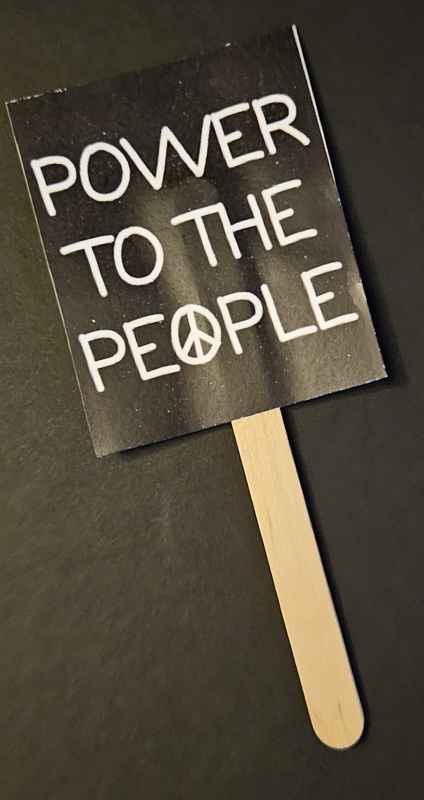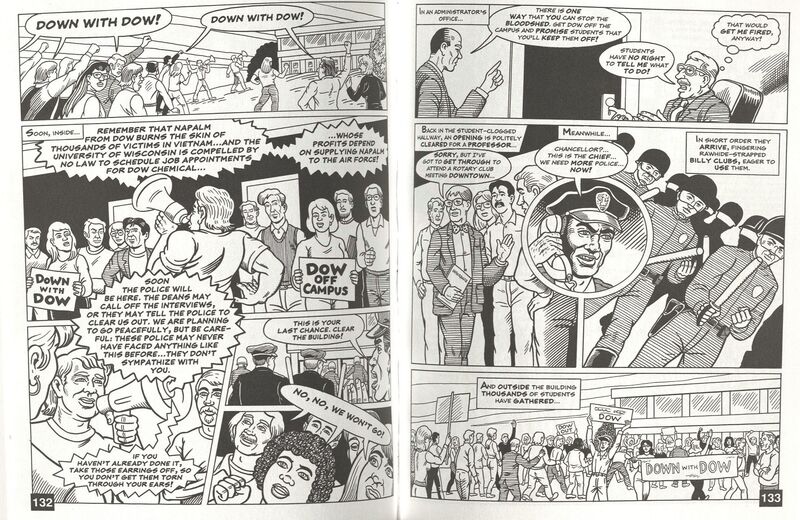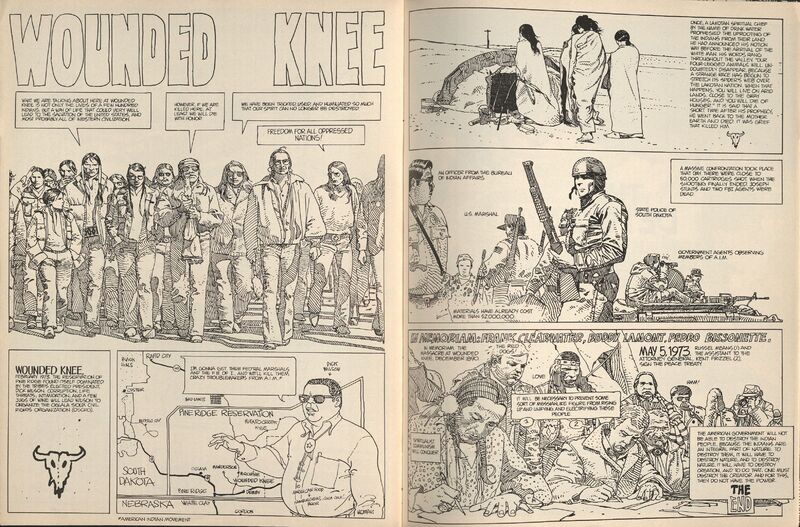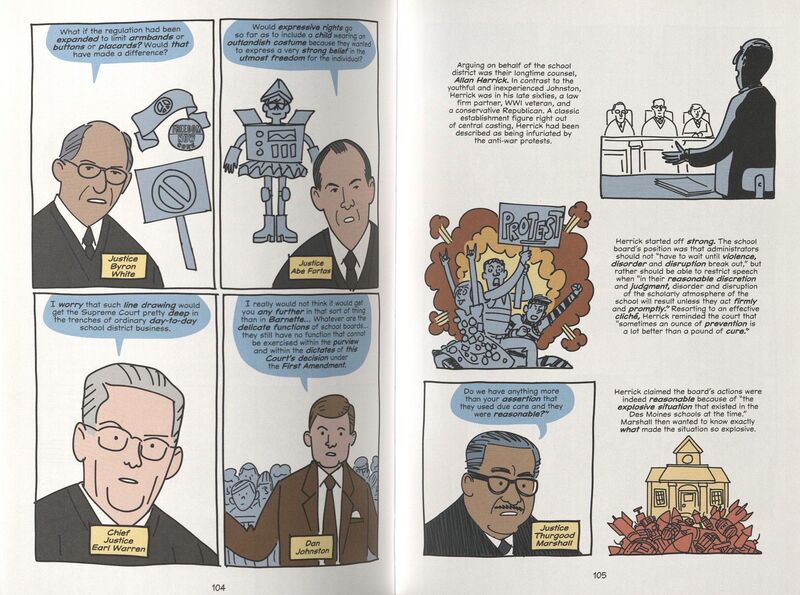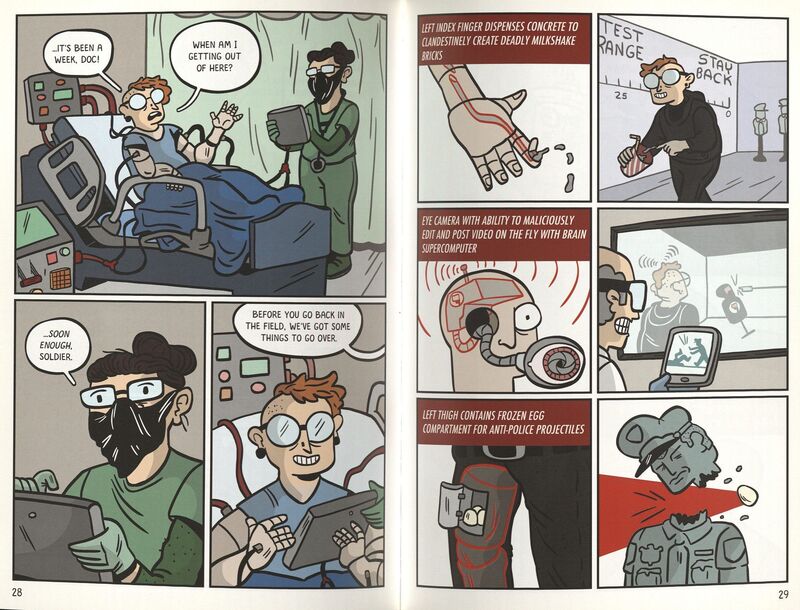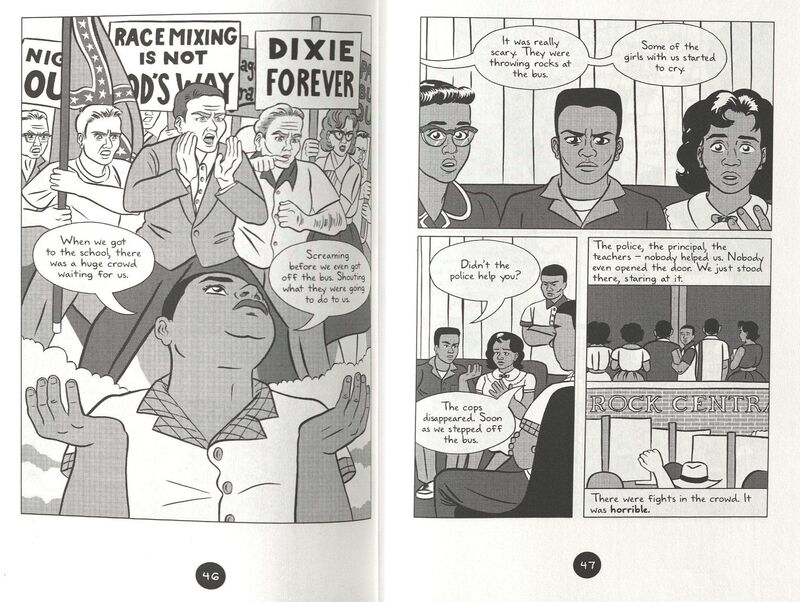Power to the People!
A healthy democracy allows for the freedom of speech and criticism of one's own government. Whether it’s anti-war, anti-Capitalism, anti-policy, or for or against social progress, protests have long sought to hold the government accountable to serving the will of the people. Non-fiction and historical fiction comics based on true events are plentiful. On display here are depictions of protests against the Vietnam War, notably demonstrations at Kent State University that turned deadly when the Ohio National Guard shot four and wounded nine unarmed college students (1). We see the 1967 University of Wisconsin at Madison student protest against hosting Dow Chemical, manufacturers of Napalm, on campus. Also an example of police brutality, the police at UW-Madison beat students with riot sticks and deployed tear gas on Bascom Hill in front of a statue of Abraham Lincoln, which led to a 10-day student strike (2).
Some comics depict protests against or in favor of political and social policies. Examples include a short story depicting the Wounded Knee Occupation of 1973, where hundreds of indigenous people and followers of the activist group, the American Indian Movement (AIM), occupied the town of Wounded Knee, South Dakota to advocate against corruption and criticize the U.S. government's failure provide fair and equitable treatment of Native Americans (3). We see the 2018 National School Walkout during which thousands of American teenagers left classes to protest gun violence and government inaction in the wake of the Marjory Stoneman Douglas High School school shooting, where 17 students and staff had been shot to death one month earlier (4).
Recent comics have tackled the Trump Administration and Muslim Ban (5), explained hacktivism as a form of electronic civil disobedience, and play on hyperbolic misinformation as seen when an anti-fascist protestor receives body modifications to create hidden projectile compartments to stow weaponized ‘soup for my family’ (6). However, people do not always use their power for social good and progress. Little Rock Nine depicts protests in favor of racial segregation, with angry protestors threatening nine African American students, the first to enter Arkansas’s newly desegregated Little Rock Central High School in 1957 (7), and 1/6 explores themes of autocracy, scapegoating, and campaigns of strategic disinformation, posing the question, “What if the January 6, 2021 attack on the U.S. Capitol had been successful?” (8).
